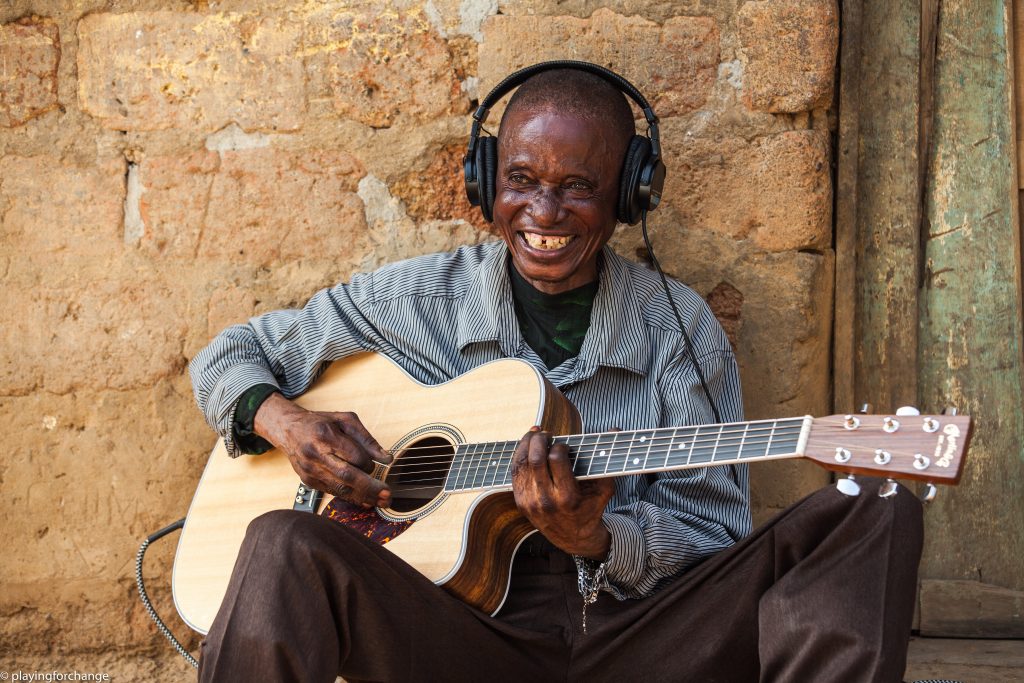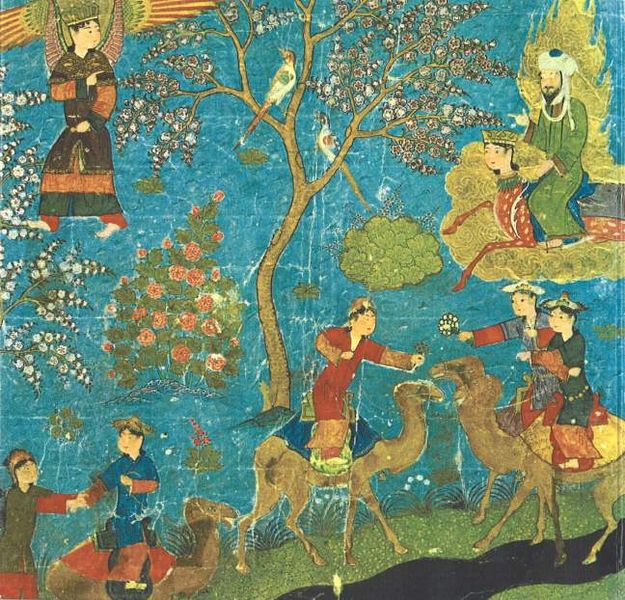From the Unreal to the Real
The World Goodwill Seminars in London, Geneva, and New York explored the theme: From the Unreal to the Real. The meetings contained some deep reflections on the nature and importance of truth in four main areas: journalism/media, education, science, and art. Below is a summary of ideas addressed by each speaker, and some key quotations have been highlighted. The full content of speakers’ presentations is available on video at worldgoodwill.org/video.
Like a multi-faceted gem, truth can be approached from many angles. One natural place to begin is to consider language as one of the major ways in which we seek to convey the truth. After all, what could be clearer than words? Yet as soon as we turn to the dictionaries of the world, we realize the quandary—for words themselves are limited in how much they can tell about an event. Every definition is already a ‘moveable feast,’ with the meanings of many words shifting over the centuries. And different languages divide up the world differently. So, in an important sense, words only point the way towards the truth. Nevertheless, words—and increasingly images—are the main tools with which we seek to capture the truth, so we must pay careful attention to who is using them and for what reason.
We should always be wary when an individual or group insists that there is only one ‘true’ meaning for a word or idea. In that direction lies the peril of dogmatic thinking which has bedeviled institutions of all kinds—and not just religion—since the beginning of time. Claiming to know the one true meaning immediately closes the door to civilized debate and friendly disagreement, narrowing the possible futures we may hope to inhabit. From the angle of esotericism, our whole universe is a continually evolving field of life, consciousness, and  form, so it would be very strange if an idea, embodied in a word or series of words, were to suddenly reach its final form while everything else continued to change. It is instead almost an axiom of the esoteric perspective that the deep, spiritual truths which underlie our everyday lives are progressively revealed in richer contexts and finer nuances as our ability to register the subtler levels of existence increase. Perhaps it is an understandable mistake, to confuse the timeless Ideals of the Good, the True, and the Beautiful with the particular definitions that they have received over time. But that mistake is magnified if individuals or groups then believe they have the right, or even the duty, to impose those definitions on others. The remedy to this divisive approach is through the loving wisdom of the soul, which is always inclusive.
form, so it would be very strange if an idea, embodied in a word or series of words, were to suddenly reach its final form while everything else continued to change. It is instead almost an axiom of the esoteric perspective that the deep, spiritual truths which underlie our everyday lives are progressively revealed in richer contexts and finer nuances as our ability to register the subtler levels of existence increase. Perhaps it is an understandable mistake, to confuse the timeless Ideals of the Good, the True, and the Beautiful with the particular definitions that they have received over time. But that mistake is magnified if individuals or groups then believe they have the right, or even the duty, to impose those definitions on others. The remedy to this divisive approach is through the loving wisdom of the soul, which is always inclusive.
Apart from the rigidity of dogma, there is also the danger of the unscrupulous use of language, with the intention to manipulate or even deceive others for selfish gain. This most often appears in the fields of politics and commerce. Glamour is one word for this phenomenon. And while the ordinary definition of this term suggests frivolity and decadence, the more esoteric understanding sees it as the attempt to veil the real and the true on physical, emotional, and mental levels. Indeed, the deliberate effort to see ‘through’ glamour by the light of the soul and intuition is a major challenge for all who seek to follow a spiritual path.
Turning from language itself to those in the media who are entrusted with its use, another dimension of the struggle to move from the unreal to the real emerges—truthfulness. We trust journalists to act as the witnesses 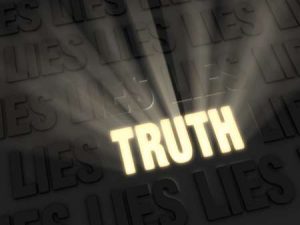 to nearly all of the major events which shape our daily lives. Yet we recognize within ourselves the possibilities of error and distortion in our perception of all but the simplest of physical events. So, we must likewise reckon with the fallibility of journalists in their efforts to convey to the public what actually happened. And journalists must often rely not only on their own perceptions but also on the perceptions and words of their sources, who will have their own fallibilities and conscious or subconscious agendas. All of these factors may affect what journalists will emphasize in their reports, the way they present their observations, and what they choose to omit.
to nearly all of the major events which shape our daily lives. Yet we recognize within ourselves the possibilities of error and distortion in our perception of all but the simplest of physical events. So, we must likewise reckon with the fallibility of journalists in their efforts to convey to the public what actually happened. And journalists must often rely not only on their own perceptions but also on the perceptions and words of their sources, who will have their own fallibilities and conscious or subconscious agendas. All of these factors may affect what journalists will emphasize in their reports, the way they present their observations, and what they choose to omit.
There is one final link in the chain between an event and its understanding which is the conscious or subconscious agenda in the mind of the receiver. If an agenda is deeply rooted enough, some audiences will only hear what they want to hear, no matter how skillfully or convincingly someone presents a contradictory argument or facts. The linguist and social critic Noam Chomsky has further identified five filters present in the media which he sees as helping to promote a climate of fear and entrenched inequality: the excessive concentration of media ownership in the hands of a few powerful figures; the funding of media by commercial advertising; an over-confidence in the truthfulness of official sources; politicians criticizing the media in order to ‘keep it in line’; and finally, the tendency of mainstream media to stick only to mainstream beliefs and opinions, the ‘status quo.’
One more obscuring veil has recently emerged—the atomizing influence of social media on news consumption. In contrast with the traditional ‘stance’ of a newspaper, which can be compared with one’s own perspective, social media unmoors stories from any recognizable editorial stance with little or no emphasis on the reliability of either the information or the sources. Serious global issues are strewn randomly throughout the same feed as cat pictures and celebrity antics. Thus, everything is accorded equal ‘importance,’ and truth is in danger of becoming merely what makes you feel good.
Finally, the question of truth connects fundamentally with the question of freedom. As noted earlier, certain media practices can create a climate of fear and uncertainty. But we are only truly free when we are free from 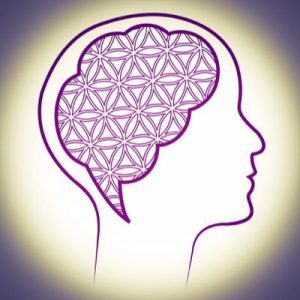 fear, no matter how democratic our societies appear to be. Fear can stifle the expression of love. Thus, we are all responsible for observing our society lucidly, and part of this involves cleansing our own perceptions. The need is, therefore, to return to the true self through meditation, leading to the ability to discriminate between truth and falsehood. Discrimination is only possible when the mind is aligned with the soul and submits itself to the light of the intuition through a humble heart and simplicity of mind. This enables us to recognize that our picture of truth is always incomplete, that the landscape of truth is in fact infinite. Meditation allows us to move from the truth contained in words to those veiled by symbols to that highest spiritual truth that can only be experienced in silence.
fear, no matter how democratic our societies appear to be. Fear can stifle the expression of love. Thus, we are all responsible for observing our society lucidly, and part of this involves cleansing our own perceptions. The need is, therefore, to return to the true self through meditation, leading to the ability to discriminate between truth and falsehood. Discrimination is only possible when the mind is aligned with the soul and submits itself to the light of the intuition through a humble heart and simplicity of mind. This enables us to recognize that our picture of truth is always incomplete, that the landscape of truth is in fact infinite. Meditation allows us to move from the truth contained in words to those veiled by symbols to that highest spiritual truth that can only be experienced in silence.
The Presenters
Modern Journalism Reflects a Shift in Consciousness
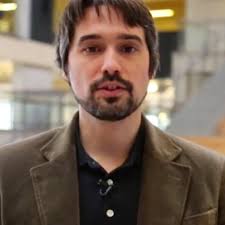 Christopher Schwartz is an American researcher and journalist. He is currently conducting doctoral research at KU Leuven’s Institute of Philosophy in Belgium while instructing at the American University of Central Asia in Kyrgyzstan where he also works as a journalist. He is a member of the Bahá’í faith.
Christopher Schwartz is an American researcher and journalist. He is currently conducting doctoral research at KU Leuven’s Institute of Philosophy in Belgium while instructing at the American University of Central Asia in Kyrgyzstan where he also works as a journalist. He is a member of the Bahá’í faith.
Christopher explored the etymology of ‘journalism,’ indicating that it comes ultimately from the verb ‘to shine.’ Thus, “the true task of a journalist is to illuminate—illuminate in both an intellectual cognitive sense and in a spiritual sense, a moral sense.” Another theme which he wanted to address is the difference between a subjective and an objective perspective, which he suggested are not opposites, as they are often portrayed. Rather, objectivity is concerned with being the focus or subject of another’s attention and is connected with the journalistic ideal of the ‘impartial spectator.’
Finding a way to be impartial and report the whole truth is a difficult challenge for journalists, as the well-known parable of the blind men and the elephant shows. To illustrate this point, Christopher shared the results of an extensive survey of journalistic attitudes which identified four major ways in which journalists see themselves. The first is as a ‘Populist Disseminator.’ This implies a very close identification with the journalist’s intended audience. The idea is to serve ‘the people,’ and a journalist of this kind is mainly neutral towards the establishment, except where its interests or actions conflict with those of ‘the people.’ A ‘Populist Disseminator’ believes that it is not their primary task to persuade an audience of the truth but to edify them.
The second kind of journalist is an ‘Opportunist Facilitator,’ who is closely identified with the establishment. Like the ‘Populist Disseminator,’ they are less focused on discovering the truth: instead, they wish to support the establishment agenda. So they are not necessarily interested in persuading their audience of something unless they believe the establishment wishes it. This kind of journalist may find themselves in a dilemma on how to act when there is a major change in the establishment as the result of elections or revolution.
The third kind of journalist is the ‘Critical Change Agent,’ who actively desires to affect the socio-political agenda and to inspire their audience to act for change. The ‘Critical Change Agent’ is usually critical of the establishment, so if their work is successful and their recommendations for change are adopted, they find themselves in the opposite dilemma from that of the ‘Opportunist Facilitator’—how to avoid being incorporated into the establishment.
The fourth kind of journalist is the ‘Detached Watchdog,’ who values ‘impartiality’ and ‘objectivity’ above all. Such journalists believe that hard truths may be necessary for social progress, and while they are typically hostile towards the establishment since the establishment does not usually give the populace full information, they may also question whether social activists are going too far or are pursuing a covert agenda. As a result, they may often find themselves to be in conflict with their society and may think of themselves in terms of a ‘loyal opposition.’
Watch the video: worldgoodwill.org/video#cs
Restoring Hope Through the Media
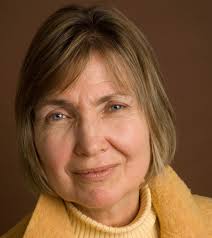 Judy Rodgers is the founder of Images and Voices of Hope, a global community of journalists, documentary filmmakers, and media professionals who are focused on the potential of the media to be an agent of positive change and world betterment.
Judy Rodgers is the founder of Images and Voices of Hope, a global community of journalists, documentary filmmakers, and media professionals who are focused on the potential of the media to be an agent of positive change and world betterment.
She proposed that the unreal could be identified with the outer material world, while the real or true concerns the energy which is intrinsic to life. She remarked, “Truth, at the highest level, is that which is unchanging, immortal, persistent, and restorative.”
Two key questions were posed: How can media move from a focus on the unreal to a focus on the real energies and qualities of life? And as citizens and media consumers, how can we support this change?
Since 1999, Images and Voices of Hope has had regular summits and meetings to deepen the understanding of their mission. Then, in the aftermath of the Sandy Hook massacre, when Curtiss Clark, editor of the Newtown Bee, proposed the idea of a ‘redemptive narrative,’ Judy and IVOH were led to the concept of a ‘restorative narrative’ which “stays with the story through the messy middle and shines a light on resilience in individuals and in communities. By shifting the focus from victims to survivors, by focusing on ‘What gives life?’ and by tapping into the resilience of the human spirit, we begin to see beneath the surface to the story of truth underneath.” By reminding us of the human virtues on display, we become stronger, more creative, and more able to rebuild. To restore hope, “storytellers have to be discerning observers, to see beneath surface glamour to the deep resilience within communities.”
Watch the video: worldgoodwill.org/video#jr
Constructing a Universal Dialogue through Media Literacy
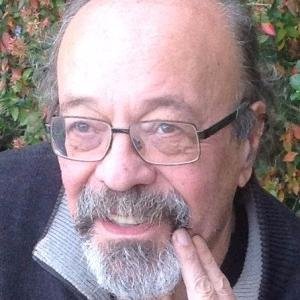 Gabriel Jaraba is a professor at the Autonomous University of Barcelona, and the UNESCO Global Chair on Media Literacy and Intercultural Dialogue.
Gabriel Jaraba is a professor at the Autonomous University of Barcelona, and the UNESCO Global Chair on Media Literacy and Intercultural Dialogue.
Gabriel reflected on the need for a deepened media literacy in our technological age when the collective mind of humanity has been given physical form through the Internet. Media literacy is a means of defending democratic freedoms and ultimately of realizing a planetary society based upon goodwill and right sharing.
The 21st century is an age of total communication conditioning every aspect of life. Thus, we are in the midst of a period of media disruption, which Gabriel described as a “change of civilization in all its aspects.” The question then arises: how can we act responsibly in this age?
We might be tempted to react with fear and seek to stifle this powerful trend, but in fact it is a great opportunity to advance planetary consciousness with scope to greatly diffuse the Ageless Wisdom through the universal network of the Web, which is the physical manifestation of a true ‘noosphere’, or sphere of human thought, as predicted by Teilhard de Chardin.
The existence of this physical manifestation of the mental plane implies our responsibility to preserve and nurture its correct growth so that it may become a useful vehicle of right human relations. To do so, Gabriel suggested, we should carefully guard it from the danger of being captured solely by big business. Major corporate platforms tend to stifle active communication of opinion in favor of passive information consumption. Thus, media education in schools is essential but is not enough. Media literacy must become a practical example of applying right human relations.
Gabriel shared his thoughts on the new values inspiring media literacy. First, there is the defense of autonomous individuals who have the right to information which they can critically assess. Second, a belief in the constructive value of open, participatory dialogue in the ability of crowds and organized collectives to generate quality information, critical evaluation, and decision-making processes, and the key importance of sharing knowledge. Third, the power of the creative imagination, which should fuel an active communicative democracy with equality of participation and expression of opinion. And fourthly, a respect for cultural diversity and inter-cultural dialogue. “The new media literacy respects the autonomy of each culture and its singularity because it builds bridges for the construction of a universal dialogue between them for the construction of shared values.”
Watch the Video: worldgoodwill.org/video#gj
Drawing Attention to the Good, Beautiful, and True
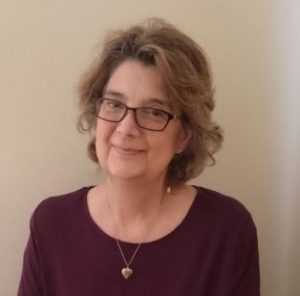 Alexandra Ratcliffe is an educator, thinker, and freelance writer. Her work has appeared on The Huffington Post (huffpost.com) and she maintains her own website at www.soulfulconnections.uk.
Alexandra Ratcliffe is an educator, thinker, and freelance writer. Her work has appeared on The Huffington Post (huffpost.com) and she maintains her own website at www.soulfulconnections.uk.
Alexandra Ratcliffe gave a brief overview of the history of information sharing, noting the fairly recent emergence of organized propaganda techniques and the essential importance of education for media literacy to counteract this tendency in order to defend freedom of thought.
She began by reflecting on the existence of many levels and meanings of truth, from the concrete to the subtle and the Absolute. However, there is currently a sense that all truth is relative to the individual: ‘Post-truth’ was the Oxford Dictionary’s word of the year for 2016, and the definition contains the implication that personal feeling is more important than rationality and facts. Another related term that has recently gained currency is ‘alternative facts.’
To establish the facts about an event, historians distinguish between primary sources—first-hand accounts or evidence—and secondary sources—reports written about these accounts. Tertiary sources combine elements from both primary and secondary sources. The further away in time or space we move from an event, the more likely it is to be distorted, and it is an unfortunate truth of journalism that direct reporting from primary sources is expensive. This financial pressure in the modern media landscape implies that second- and third-hand reporting tends to proliferate, pushing us further away from the truth.
It is helpful to approach stories in the media by asking if they draw our attention to the good, the beautiful, and the true. Each of us is responsible for contributing our share of these qualities to the mental and emotional life of humanity.
The spread of misinformation has significant implications for democracy. As Yale history professor Tim Snyder has noted: “To abandon facts is to abandon freedom. And if nothing is true, then no one can criticize power because there is no basis upon which to do so.” This underlines the key need for educational systems which teach discernment and discrimination and help integrate the physical, emotional, and mental faculties, leading to contact with the intuition, “the ultimate discerner of truth.” Secondary education should include media literacy, civics, ethics, and reflection on the impact of technology. A programme which Ratcliffe used, called ‘Living Values for a Better World,’ introduced the students to the concepts and vocabulary of peace, of empathy, of respect, and tolerance. For child and adult alike, education on the reliability of information sources should be lifelong. This would help us to decide what and what not to share. There is a need for reflection on the intention of our words and on how pure intentions and pure thinking clarify the mental atmosphere.
Watch the video: worldgoodwill.org/video#ar
University Courses on Meditation Can Awaken the Intuition
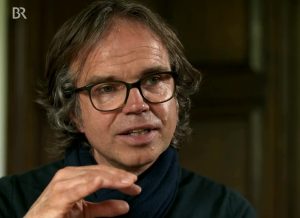 Dr. Andreas de Bruin of the University of Applied Sciences, Munich, founded the Munich Model “Meditation at University” in 2010. He is now teaching meditation classes in nine fields of study at four faculties.
Dr. Andreas de Bruin of the University of Applied Sciences, Munich, founded the Munich Model “Meditation at University” in 2010. He is now teaching meditation classes in nine fields of study at four faculties.
Andreas de Bruin shared his positive experiences introducing a variety of meditation techniques to university students as well as his latest project which concerns the use of meditation to unveil the deeper meaning of the art of the Old Masters. Both projects have the broader aim in view of allowing the meditator to become of service to the wider whole.
Andreas began by indicating that his intention in creating the meditation-based ‘Munich Model’ was to allow the introduction of intuition into universities. The global problems that we have created have been made by the application of the intellect, and we need intuition to help us solve these.
Andreas referred to the work of biologist, philosopher, and neuroscientist Francisco Varela and psychologist Daniel Goleman, who concluded that science’s major contribution to the 21st century would be to tackle destructive emotions, which are the underlying causes of most planetary problems. They initiated a dialogue with the Dalai Lama and other Buddhist monks on the value of meditation and mindfulness. The results of their research are available at www.mindandlife.org. Andreas sees this work as the seed of the boom in research into the value of mindfulness. He feels that mindfulness is the precursor stage to true meditation, which only takes place when there is integration within the personality, allowing the link with the soul to begin to be built. At this point, real control over the mind can begin to be established, and many of the students who have joined his courses say that they want to improve their control over their minds.
While numerous programs bring mindfulness into universities and businesses in order to build concentration skills and strategies to cope with stress, for him, the deeper twofold purpose is to allow students to connect with the soul, and then to bring out these soul energies in creative service to society. “…it was important to bring in meditation… so that we can help the students to get more in touch with themselves and maybe also bring to the outside what they have inside themselves and then for society.”
Watch the video: worldgoodwill.org/video#ab




